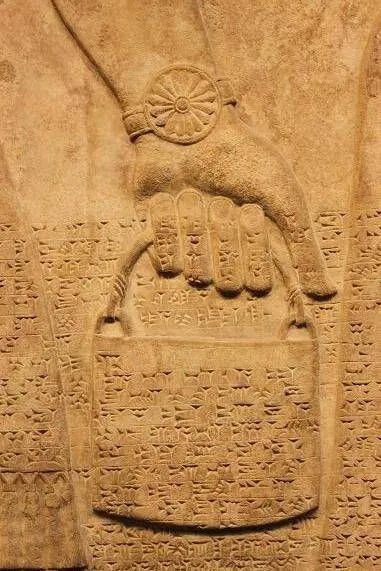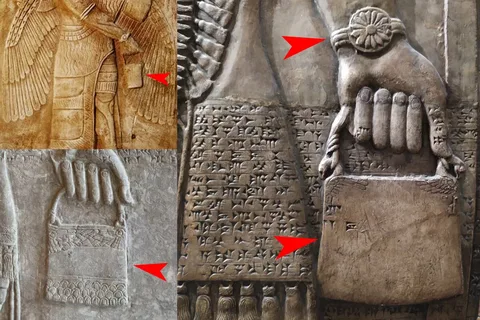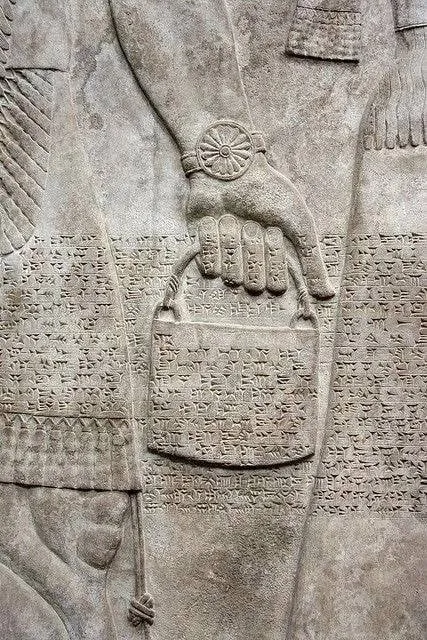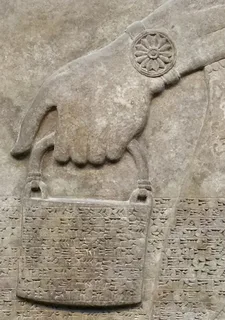We don’t know what these “handbags” are supposed to represent, but they were important enough to be carved into stone by ancient civilizations all around the world.

Across various ancient civilizations, from Mesopotamia to Mesoamerica, a peculiar and enigmatic symbol repeatedly appears in stone carvings—what modern observers often describe as “handbags.” These mysterious shapes, resembling a small, rounded bag with a handle or strap, have been found in the artwork of Sumerians, the Olmecs, Göbekli Tepe, and other ancient cultures. The recurring presence of this symbol in civilizations that, as far as we know, had no direct contact with one another raises numerous questions. What do these “handbags” represent? Why were they significant enough to be carved into stone monuments, temple walls, and sacred artifacts? While their true meaning remains uncertain, various theories attempt to explain their purpose and significance.
The handbag-like motif has been identified in multiple regions and historical contexts, including:
Mesopotamian Art: The Sumerians, one of the earliest known civilizations, depicted their gods, known as the Anunnaki, holding these mysterious objects in various reliefs and carvings. In some cases, these deities are shown holding a “handbag” in one hand and a pinecone-like object in the other, possibly symbolizing fertility, wisdom, or purification rituals.

Göbekli Tepe (Turkey): Dating back to at least 10,000 BCE, the oldest known temple complex features stone pillars engraved with three evenly spaced “handbags.” These carvings are among the most ancient examples of this symbol, suggesting that it held significant meaning for pre-agricultural societies.
Mesoamerican Cultures: The Olmecs, one of the earliest civilizations in the Americas, also depicted similar symbols. Some carvings show their deities holding or carrying bag-like objects, much like their Mesopotamian counterparts.
Ancient India and Southeast Asia: Some depictions of Hindu gods, particularly in older reliefs, show similar handbag-like shapes, often held by divine or celestial beings.

Historians, archaeologists, and alternative researchers have proposed various theories regarding the meaning of these objects:
One of the most widely accepted theories is that the handbag represents a container of sacred knowledge or divine power. The gods and rulers depicted with these objects may have been portrayed as bearers of wisdom, tools of creation, or symbols of authority.
Some scholars believe that these objects may represent physical containers used in religious or ceremonial practices. They could have held water, seeds, incense, or other sacred materials needed for rituals.
Others suggest that the handbags could be stylized depictions of the universe, symbolizing the balance of the heavens, earth, and underworld. The curved top may represent the sky, while the base could symbolize the land or the underworld.

Some alternative researchers argue that the presence of this symbol across unconnected cultures suggests the influence of a lost civilization or an advanced ancient society that spread knowledge globally. While this remains a speculative idea, it continues to fuel curiosity about ancient cross-cultural connections.
Despite extensive research, the true meaning of these enigmatic “handbags” remains elusive. Their presence across civilizations separated by time and geography suggests that they played a crucial symbolic role in the ancient world. Whether they were sacred vessels, representations of cosmic balance, or something else entirely, these symbols continue to captivate historians, archaeologists, and enthusiasts alike. As new discoveries emerge, perhaps we will one day unlock the true purpose behind these intriguing ancient carvings.






